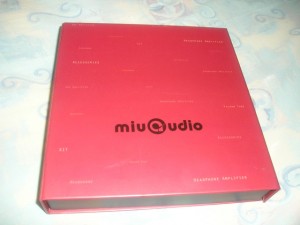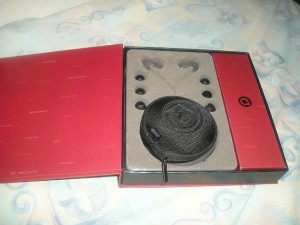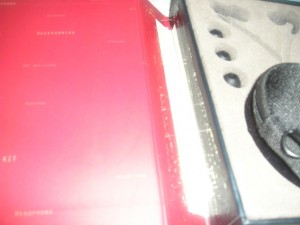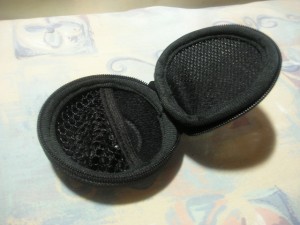It”s a great time to be an audiophile. With advances in driver technology and the boom of the Chinese audio scene, we are seeing an unprecedented number of new products at killer prices, of an audio caliber you would normally associate only at price points twice or even five times higher.
One of the relative new comers in the market is Miu Tech Systems, a company founded in 2004 whose goal is to provide audiophile quality performance at reasonable prices. Although they”ve been around since 2004, I honestly haven”t heard of them before 2011. I gather they have not gone international since recently, but beyond that I believe that they have only recently delved into the hi-fi audio side of things — as is evidenced by the relatively small range of products in their Miu Audio branch, which seems to be concentrating on audiophile products.
These include tube amps, speakers, CD players, and even electrostats. They have a full, if relatively sparse lineup diversity-wise, and you can peruse the selection here: https://www.miu-tech.com/index.html
Being a newcomer and all, they may have the goods, but they severely lack the name presence and goodwill of established companies. As part of their marketing efforts, they gave away around a hundred of their new MR2 Pro IEM last April. I received an email from Ivan of Miu Audio confirming my selection back in April 11, but because of geography I only received the MR2″s a couple of weeks ago.
With that much headtime on them, I”m ready to publish my findings.
At a retail price of $50, the MR2″s, which I shall now dub the “Miu”s,” undercut the highly competitive $100 IEM market which has a slew of favorites such as the Turbines, RE0 and the Hippo VB, and these will be hard to dethrone. That said, they instead dive straight into the massively overpopulated $50 price point which they will share with great company like Eternas and my own personal favorite of this bracket, the Ultimate Ears Metro.Fi 220.
Packaging
The Miu”s come in a very elegant looking red case stamped with “Miu Audio” on the front. Opening the magnet-locking case you are greeted by the MR2 itself along with a strange hardcase and a set of small, medium and large tips. There is a red spacer box on the right which has absolutely nothing in it, but might be a good place to store some cigars, I honestly thought they looked so much like a cigar box that I half expected to find some cigars inside.
Upon closer inspection I found that the box was all looks and no substance, because the glue on the sides came apart almost immediately and I was reminded that this was just budget packaging. But that”s fine, because I don”t care about the packaging, I care about the IEMs!
Build
To the Miu”s themselves, they look quite cheap and unassuming. They look like two black chiclets strung together with a typical tangly rubber cord, and protruding mushroom tips in an angle on the end. They are very light. They weigh practically nothing, which means they really are nothing but hollow plastic. They aren”t lookers but from a utilitarian point-of-view they are great. The cable terminates into a nice angled gold-plated plug. All in all, mediocre housing, tangly cable, nice entry plug. It was only when I started changing tips though that the complaints surfaced.
First off, I actually broke the nozzle on the left side by trying to remove the tips! That”s really shoddy, hilariously bad build quality. They didn”t break per se, more like the glue they used to attach the nozzle to the body was weak-sauce, and it gave it up when I tried to put it out. The nozzle came off clean, which was fortunate because that meant I could easily super glue it back on. And I did, and that solved all problems. I noticed it also has a soft black filter over the nozzle, a type of wax guard I am seeing more and more with IEMs that come out of china. Instead of some kind of metal grill, this black paper-like material will likely get destroyed over time, but from my experience that doesn”t really matter much. It”ll keep the insides of the Miu clean while it lasts, but I”m sure it”ll get busted after a few months.
Speaking of the insides, you can likely get to the insides really easy by prying open the Mius with your finger tips. The left housing of my unit was fine, but on the right you can see the seams of where the housing came together, and it has a slight crack to it, as if, again, the glue came apart. If you put your fingernail inside and tug and pull a bit, I am sure the Miu”s would come apart splendidly. If you”re a believer in adding additional damping using Blu Tak (and yes, I do this a lot myself) this is just fine and dandy.
For the purposes of this review, I haven”t gone to this extent yet, though I am sure I will in the future.
All in all, honestly, lousy and shoddy build quality that I would expect to come from a kindergarden home ec project. I guess you can”t expect much for $50 US retail.
Fit
So instead, let”s fit on the fit. I am happy to report that, despite my initial misgivings, the fit on these is awesome. I attribute this mostly to its featherweight constitution. Unlike the Turbine line of IEMs which are all big and heavy, and all of which drop out of my ear at the slightest tug, the Miu”s effortlessly stay in place as if they were a natural fixture of my ear. No matter how much I bobbed my head or swung it from side to side, the Miu”s stayed in place like champs and kept their seal.
I prefer to wear my IEMs down instead of over ear, and these kept in place with the stock tips excellent in this configuration, which was surprising because of their shape. These were clearly designed to be worn over ear and when doing so they do so perfectly, albeit the lack of memory wire and a chin slider will make it hard for those used to such amenities to get the perfect over ear fit. I had no issues, but since the cables ran through my ear and did not have memory wire, they were actually easier to dislodge in this config than wearing them down. I am sure different strokes will work for different folks, but for me these wore perfectly and kept their seal easily in the downward configuration.
Changing tips gave me varying degrees of fit, but basically the stock tips work fine for keeping the seal to my ears. Speaking of tips, the size of these tips are weird. They silicon tips themselves have a small nozzle — about a millimeter larger than the Shure tips you find these days (the ones that fit the SE530, like the Shure Olives). However the actual nozzle of the Miu”s is larger than that! You cannot fit Olives on these without considerable stretching on the part of the Olives, this is because the tube of the Olives is much thicker than that of the silicon on the stock tips. Try to put Olives on these and you are sure to break them as I mentioned with the poor nozzle build.
The nozzle itself is actually roughly the size of the Monster Turbine Pro”s nozzle. All of my Monster Pro tips fit these like a glove, including the super tips and all the hybrid tips. If those are your thing, then you”re in luck. That said, since the stock tips are significantly smaller than the nozzle, getting them back on is a royal pain! It can be done because the silicon is thin and stretches easy, but it”s a chore to do and I honestly haven”t looked back at them since changing tips. Mostly because it”s a pain to get them back on.
That”s fine because sound-wise…
Sound
The Miu”s sound great! Using the stock tips, they do fine, but there is only a decent amount of isolation using the stock tips. If I were to describe the sound stock, it would be a bass head”s dream. These clearly fall into the “Euphonic” category of sound signature, along with the likes of the Monster Turbine Pro Gold, the VModa Vibe and the IE8. These have a large, airy soundstage, laid-back mids, clear treble and luscious, enveloping bass. Tone is definitely warm and a bit on the darker side, separation isn”t very good though despite the wide soundstage, sounds are a bit smeared together. The laid-back mids definitely contribute to the perception of its soundstage and this works great for my tastes.
I should note that although the mids seem a bit recessed, they are well-defined and do not suffer from any hazy muddiness like you would get on the Fischer Eternas or the VModa Vibes. These are surprisingly clear and detailed, surprising for this price point to be honest. They aren”t as lush as the Turbine Golds, and nowhere near as mid-centric, but the spacious presentation has its own charm for sure.
Over on some Chinese forums people compare this favorably to the IE8 and they say it is better! I am not quite prepared to say that, but after much AB testing between the IE8 and the Miu”s, I will say this:
The Miu”s have far more bass. Much, much more. The IE8 at the largest (5th) setting has less bass than the Miu”s stock. I usually listen to the IE8 at a setting of two, which provides just enough bass for me so as not to intrude on the mids. The Miu”s easily have much more than that, and unfortunately you can”t change the settings. Surprisingly, despite all this bass, the mids still come out clear, it”s a more a heft of sub bass and a small helping of mid-bass, about as much mid-bass as the IE8 on 5, but with much more sub bass impact. I find it strangely intoxicating, being the bass head that I am, because I always appreciate dollops of bass coupled with clear mids.
Unlike the Turbine Golds which have lots of bass but which are definitely overshadowed by the mids, the Miu”s are able to keep a load of bass that definitely outweigh the rest of the spectrum, but which play nice with the mids. They aren”t like the Hippo Boom which were total bass monsters in every way and shape and form, with mid bass to go for the next century, but which had really muddy mids and severely rolled-off highs. The Miu”s seem to take the strengths of the Boom, but manage it with a healthy mid-section and crisp, clear highs. Highs are quite sparkly but not yet sibilant or harsh, which suits me fine. In fact, I find the highs on these better than both the Golds or the IE8 — they aren”t as rolled off and have more sparkle and crispness, without falling into harsh territory. That”s a welcome addition to the often rolled-off sound of the IE8 or Golds.
All in all, though, I actually prefer its general sound sig to the IE8! For some reason I still think the IE8s are better. Why is that? I may be blinded by price in the equation, but generally I find that the IE8 is significantly less fatiguing. The Miu”s are very fatiguing and hard to listen to for more than an hour or so. I think it”s the generous helpings of bass. After a while it”s hard to listen to them. I am a bass head but even I must find that this is the only explanation, because the mids and highs of these aren”t harsh at all. It”s probably all the bass coming in.
That said, after some burn in time I found that this problem eased up. I am not sure if it”s driver burn in or my head getting used to the sound, but after a few weeks with these I can now listen to them a lot easier, they aren”t quite as fatiguing. I am not entirely sure if the bass quantity lessened with burn in and the sound became more forgiving, but these really evolved into a great sounding IEM that I can use for extended periods.
I have also tried switching to my favorite Shure e2C black soft flex, and these were a lot better than the stock tips. The sound became fuller with more body, and fit and seal weren”t compromised at all. I also switched to the Monster mushroom tips (medium) which I customized by stuffing with Blu Tak. This technique makes it easier to get a perfect seal, and the result is worth it for much improved isolation and tighter, bigger bass response. These are the tips I use with the Miu”s now and I am happy to say that I now have new bass-monster IEMs to replace my old bass-head set, the Monster Turbines.
Unlike the Turbine Golds which are a more mid-centric IEM and which lost the charm of the original Turbine”s thundering bass, the Miu”s harken back to the time when I had the Turines as my bass head IEMs. They have the same impact and quantity just about, but there is a difference in the quality of their bass. Where the Turbines had a hard-sounding, stiff and rough-edged bass, the Miu”s have a softer, more enveloping type of bass, but with similar impact as the Turbine”s. The bass sounds similar to that of the XB700″s, which I often describe as a warm ocean of soft enveloping bass. The Turbines on the other hand are like a rough-hewn stone type of bass that slams hard but doesn”t embrace you. I prefer the more laidback kind of bass the Miu”s has, so these are now my official bass head IEMs for the forseeable future.
Other Considerations
I have to say that the Miu”s are a pure bass head”s IEM. They come with a weird carrying case, one half of which is stiff and hard (like the Shure e2c”s case) and a zipper, but the other half is gone and replaced with a thin breathable fabric. The result is quite good, it is half the size of the Shure”s hard case and fits into your pocket better, while still protecting the IEMs fairly well. It”s weird though because the other side is fabric and if the IEM isn”t curled properly it”ll likely stick out like an unruly thumb on the fabric side. But if you roll it fine, there shouldn”t be any problems and you”ll appreciate the more pocket-friendly size.
These also drive really well, I did a lot of testing on my iPod Nano 6G and they worked perfectly. For the listening tests I did here I used a Win7 Alienware laptop feeding into an E7 DAC into the E9, using Winamp on default settings. Volume was at about 30%, which allowed me to use the E9″s larger jack and the volume pot at 9 o”clock. This gave me a comfortable listening volume and let me discern my WAV and FLAC files of Incubus, Dave Matthew”s, Dishwalla and Andy McKee with abandon. I also did some AB testing on the FiiO E7 itself fed by a silver LOD cable from a Nano 2G. Results were similar, but I did find that the Miu”s predictably sounded best on the E7 E9 combo.
There is clearly a slight benefit to amping these with a strong solid state amp, the mids came out much better on the E9 than on the E7 or the 6G Nano. I also tried them on my MP5 with Tung Sol tubes, but didn”t really like the result that much over the E7, the E9 was the best match. But the effects were not significant, these are fine to enjoy out of a DAP. Probably a higher-fidelity portable like the RSA Mustang would do these wonders, but I was not able to test.
Verdict
All in all, I have to say I am very happy with these. They do carry a bit of grain but you can”t really complain at the $50 price point. For bassheads who like the soft, enveloping kind of bass I really can”t stress enough that these are an awesome set. If you are prepared to deal with the cheap looks, the lousy build quality, these are a great alternative to the IE8, which is like 6 times more expensive.
Since these will probably be used as a portable solution to go with an iPod, Clip, Fuze or some other DAP, I honestly don”t think anyone will be able to appreciate the finer nuances of the IE8″s resolution over these. Even using a good amp like a Mustang I doubt anyone could really appreciate those fine points; for all intents and purposes these could easily be the “IE8 for the masses” and in fact it does some things better than the IE8 as is (like the treble). For $50, that seems like a no-brainer purchase to me if you are looking for something like the IE8.
It”s a bass head”s wet dream, with all the benefits and drawbacks inherent to such a claim.
Locally
For the Philippine readers, you can probably import these from https://www.miu-tech.com/index.html without much problem, expect to pay your customs tax (I paid about 900php for mine) and with the conversion rate and shipping, you”ll probably spend about 2,500 for the item, an extra 1,000 for the shipping, and customs of 900. That goes to about 4,500php more or less. At that price, I don”t think these are quite a steal, so until we can get a local distributor for these and grab them for about 2,500php which is closer to its MSRP, these probably will not make it on your short list just yet.








